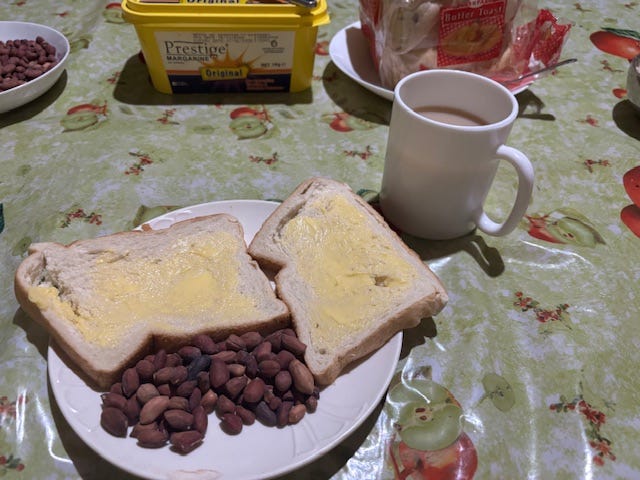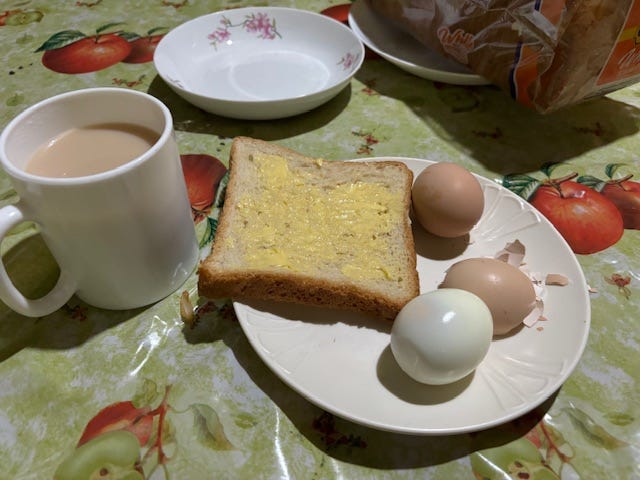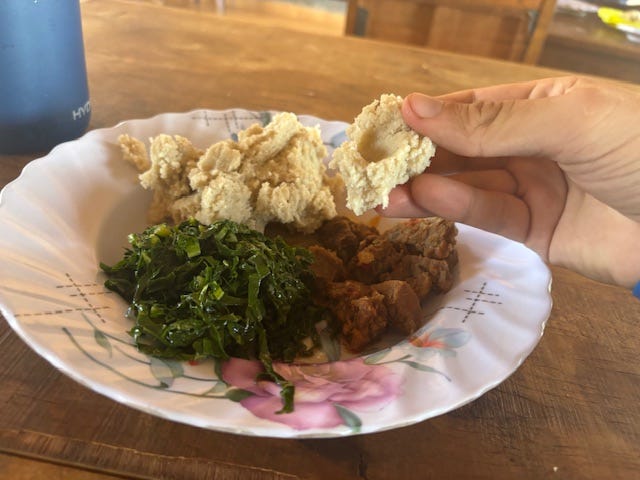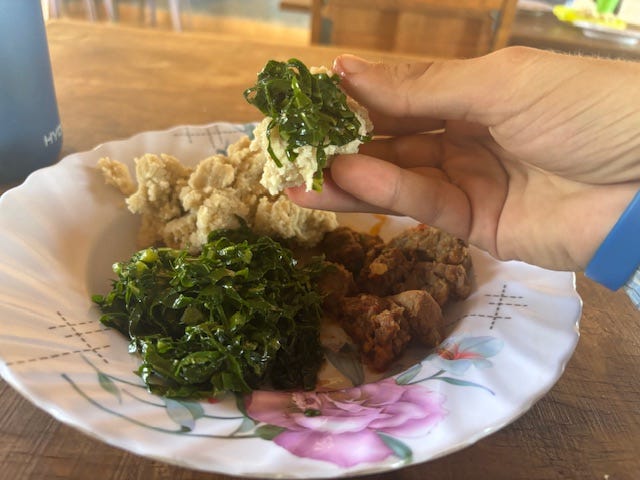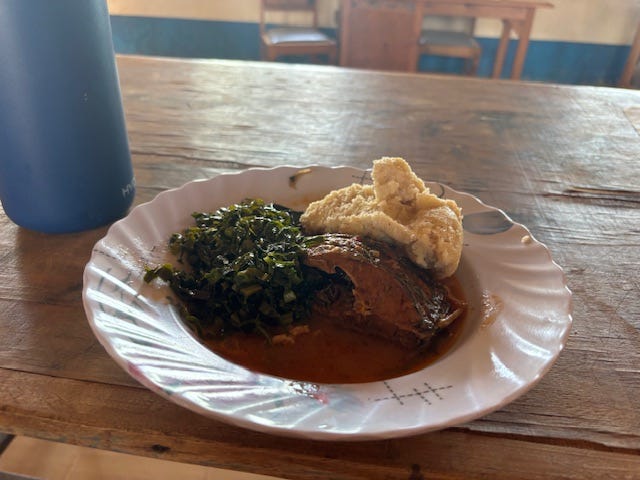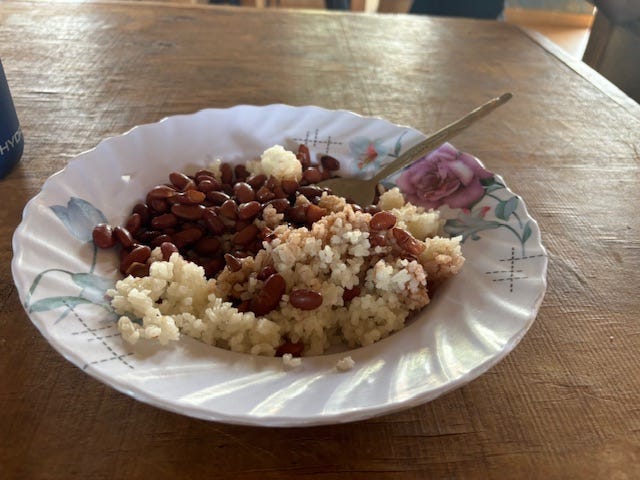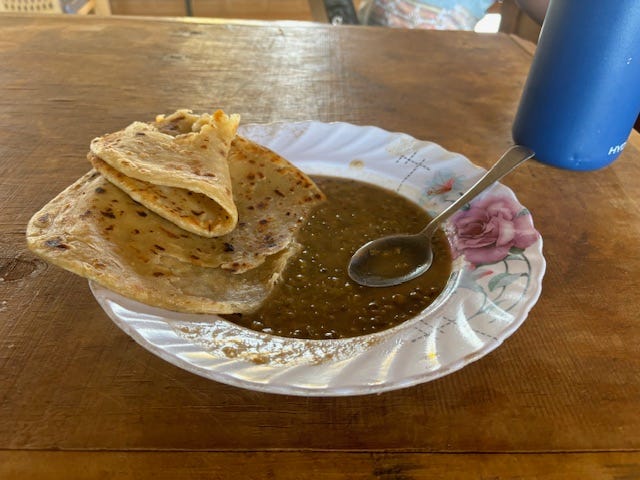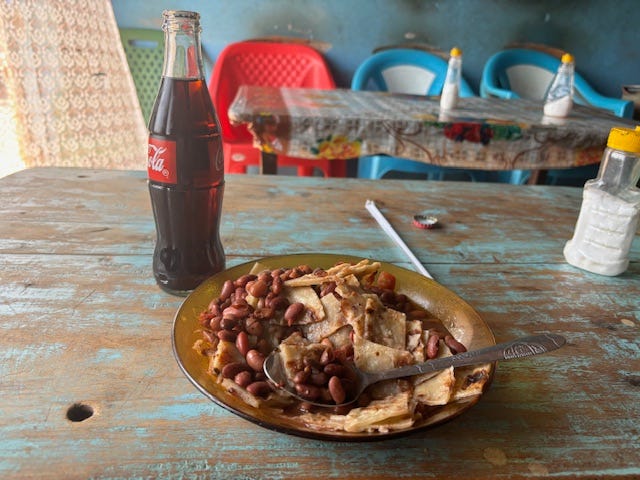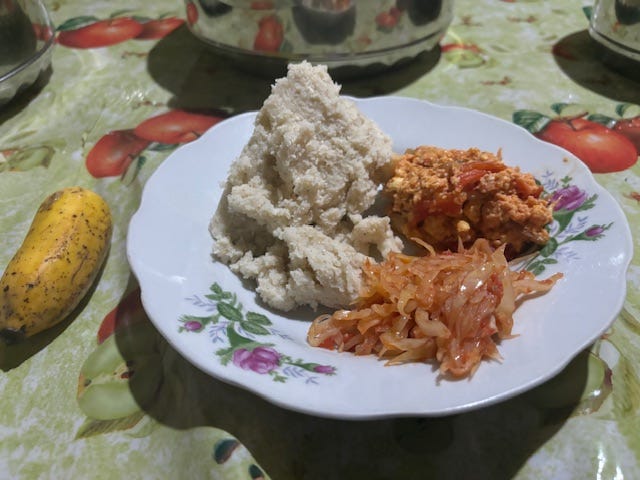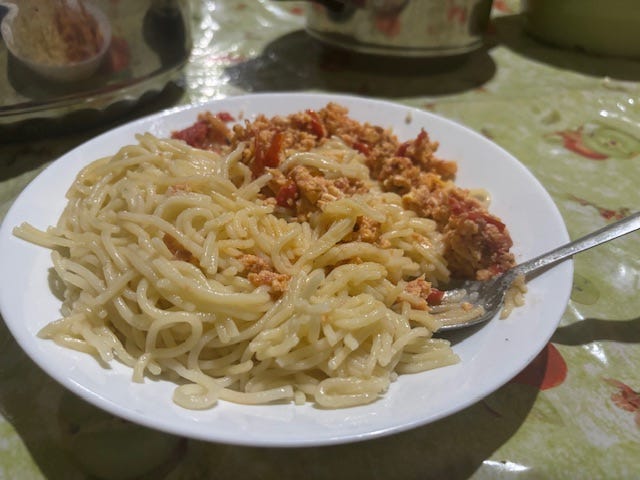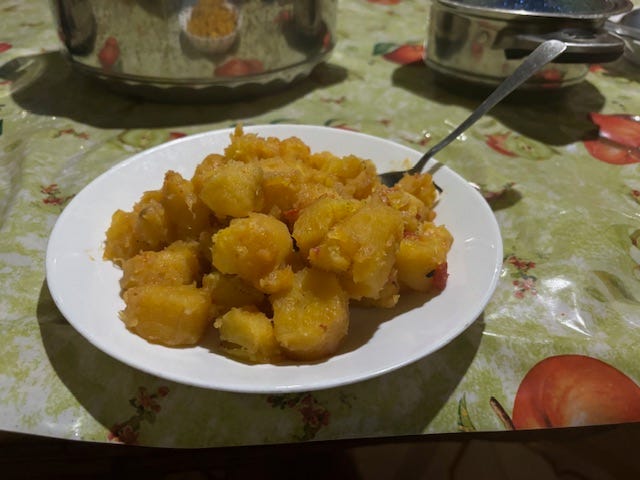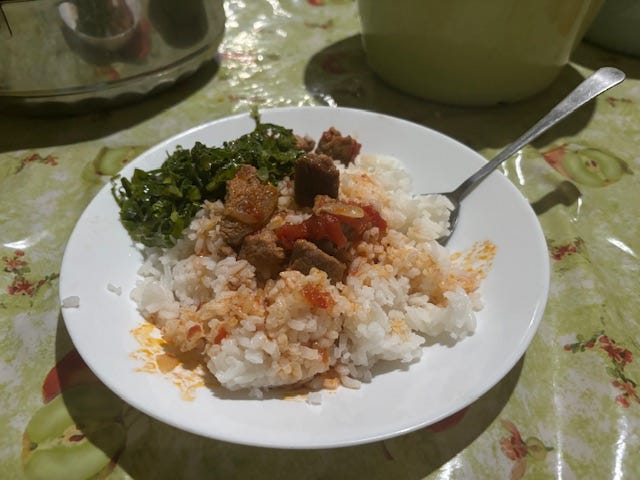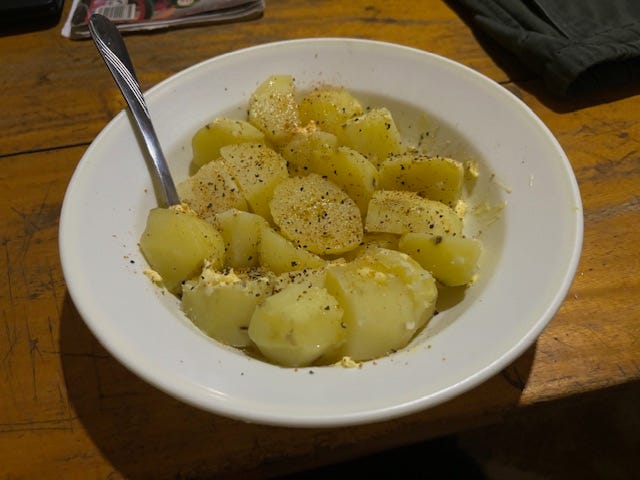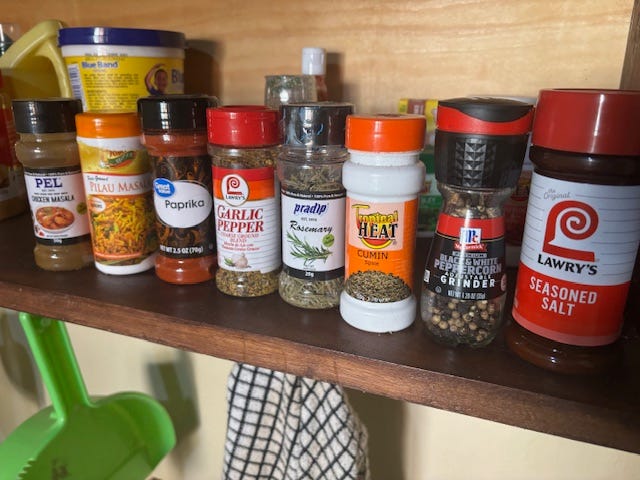Update #12: FOOD
Learn about my sustenance over the course of a week... I would probably eat chapati every day if I could.
Kula, kula, kula!
It’s time to talk about chakula (food). Below, I have laid out what I ate for every meal last week. The images will do much of the talking on this update.
On a typical weekday, my host family is kind enough to provide me with a small breakfast before school. Then, I eat lunch provided by the school. In the evening, I will often join my host family for dinner. This is not the case for most Peace Corps volunteer, so I am very grateful for their generosity. Outside of that, I will typically use the weekend or an occasional weekday as a time to buy or cook my own meals.
*Please note: Not used to being an influencer, I sometimes forgot to take a photo of my dish before I started eating, so if a portion looks small, it may just be because I had already eaten half…
Breakfast:
M - bread & butter, roasted ground nuts (like peanuts) and chai (tea)
Tu - bread & butter, hard-boiled eggs and chai
W - roasted ground nuts and chai
Th - bread & butter and chai
F - bread & butter and chai
Sa - buttered toast and chai (I have a toaster in my home)
Su - buttered toast and chai
Lunch:
M - ugali, beef and sukuma wiki (ugali is the staple food of the Kenyan diet; see the image below where I demonstrate how to create and indentation in the ugali to then use to scoop up the side dish or to absorb meat juices)
Tu - ugali, fish and sukuma wiki (the common fish here is tilapia… you must be careful with the small bones… usually the fish is served cut in half with skin and fins and everything still attached, so I usually try to serve myself the back half to avoid those fun organs near the head)
W - ugali, scrambled eggs, sukuma wiki (sukuma wiki is like kale and its name translates to “push the week” because it provides you with the strength to power on)
Th - rice and beans
F - chapati and ndengu (chapati is like a flatbread and ndengu is a green gram stew)
Sa - chapati and beans and a coke (from a local restaurant)
Su - peanut butter sandwich (I brought my trusty jar of Jif with me from the US, but I discovered peanut butter is actually available in some bigger towns)
Dinner:
M - ugali, scrambled eggs (often with tomato and onion mixed in), cabbage and banana
Tu - ugali and fish
W - pasta and scrambled eggs
Th - cooked bananas (these are green bananas, which are not eaten raw like yellow)
F - ramen (a quick fix after a long week… packets are available at local shops)
Sa - rice, beef and sukuma wiki (beef here is relatively rough and is cooked very well-done to kill off anything harmful since the meat is not preserved like it is in the US)
Su - seasoned potatoes
Bonus (chai time - it is common to have a mid-morning snack with chai):
This is usually sweet potatoes (different than the orange ones in the US), plain bread, mandazi (basically fried dough, like donuts) or hard-boiled eggs.
Kenya does not really have a spicy cuisine—that is more common in West Africa. In fact, I have noticed that at least some Kenyans have a very low tolerance for spice. So it is nice to add a little something when cooking for myself. Ugali is not bad, but when there is an alternative offered, it is nice to have something different so that I am not eating ugali every day. But many true Kenyans will eat it every day!
Overall, I like the food. I think I have only had one or two dishes that I did not like, one of which is omena, or silver cyprinid fish (you can look it up). My favorite Kenyan foods are chapati and ground nuts. Which dish looks the best to you?
Out-of-context highlight of the week: My coworker with whom I share an office was in class when someone came in and put a box with a bunch of holes in it on his desk. Hearing a noise from the box, I got up to get a closer look. I discovered he had a box of eight small-to-medium chickens delivered to school… like he Amazon Prime'd them or something. That was new.
-Daniel
Peace Corps has three objectives: (1) To help the countries interested in meeting their need for trained people, (2) To help promote a better understanding of Americans on the part of the peoples served, and (3) To help promote a better understanding of other peoples on the part of Americans. This newsletter/blog is one way in which I am working to achieve objective #3. I appreciate you reading and I look forward to sharing much more! Please feel free to message me any questions you have and I may answer them in my next post.
*The content of this website is mine alone and does not necessarily reflect the views of the U.S. Government, the Peace Corps, or the Kenyan Government.*




